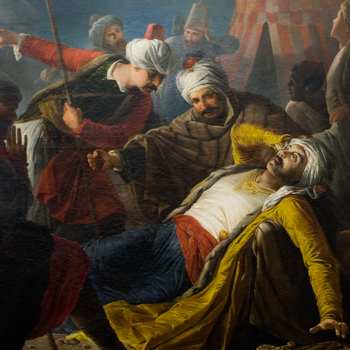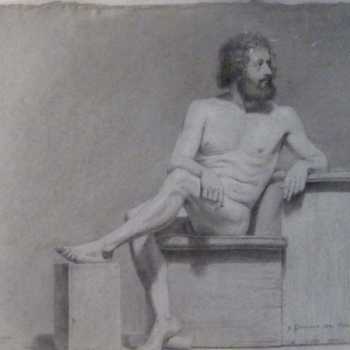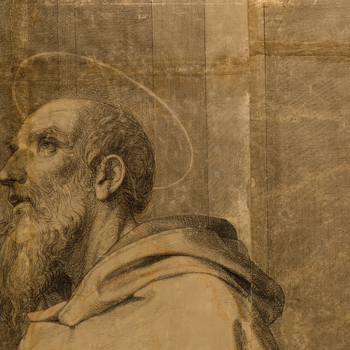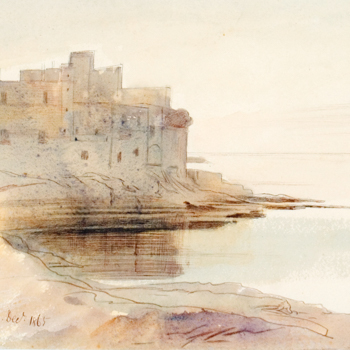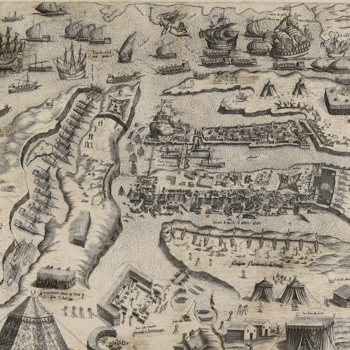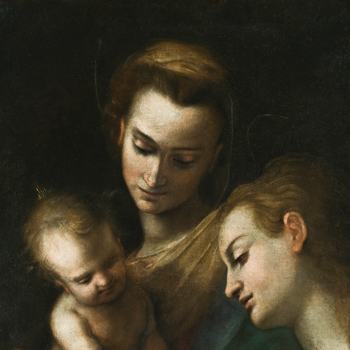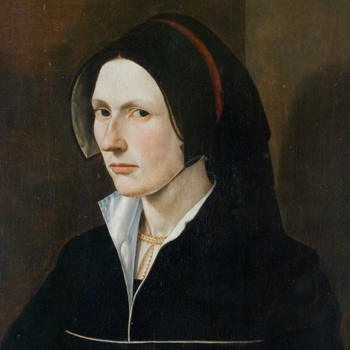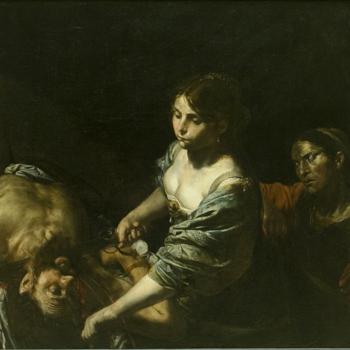Death of Dragut
Fresh from his two-year studies in Naples, the 21-year-old Calì painted this oil-on-canvas representing the fatally wounded Naval Commander of the Barbary Corsairs, Turgut Reis or Dragut, whose days were numbered during the Great Siege of Malta in 1565. It displays the emotional reactions of the shocked Ottoman Turkish comrades as they witness in disbelief the slow expiry of their military hero.
Through this painting, the enthusiastic and ambitious Calì was all set to flaunt his refined painterly qualities, technical bravura, and breath-taking ‘verismo’ tinged with a strong dose of Romanticism. This he did with flying colours as his painting quickly attracted the attention of the British Government that purchased it and had it hung for a long time in the Palace Armoury.
Considering the volatile political scenario of the 1860s, fired by the constant cultural clash between the British and the Maltese, the subject matter of this painting held a special significance for the latter. It smacked of undercurrents of nationhood whereby Dragut symbolically represented the undesired foreigner (thus allegorizing the British) who has been defeated (the dream of the Anglophobes).

